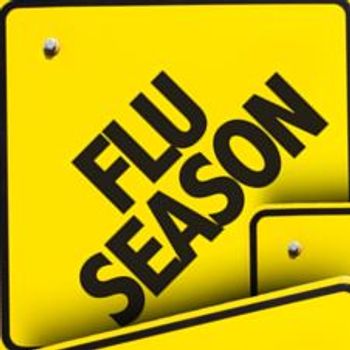
Non–Cystic Fibrosis Bronchiectasis: Long-term, Low-dose Erythromycin Is Preferred
Take-home advice for primary physicians . . . restrict long-term maintenance erythromycin therapy to subsets of patients to protect against increases in macrolide-resistant bacteria in the broader community. Details here . . .
Long-term macrolides reduce exacerbations in non–cystic fibrosis (CF) bronchiectasis, but they result in very significant increases in macrolide-resistant organisms. As a result, their use should be limited to patients who have the most difficult disease, according to a new study.
Updated results from the
“Low-dose erythromycin significantly improves clinical outcomes in bronchiectasis-it reduces pulmonary exacerbations, reduces sputum production, and preserves lung function. However, this is at the expense of significant increases in macrolide resistance in commensal oropharyngeal bacterial flora,” lead author David Serisier, MBBS, DM, of Mater Adult Hospital, South Brisbane, Australia, told ConsultantLive.
“Clinicians should therefore think carefully before prescribing macrolides in any patient,” Dr Serisier noted. “I would suggest that the use of long-term maintenance erythromycin needs to be restricted to only subsets of patients to protect against increases in macrolide-resistant bacteria in the broader community.”
That specific subgroup of patients includes those who have P aeruginosa airway infection and who have frequent pulmonary exacerbations. “I would suggest limiting the use of erythromycin to bronchiectasis patients with P aeruginosa infection and at least 2 pulmonary exacerbations in the prior 12 months,” said Dr Serisier. “Patients with milder bronchiectasis should not receive macrolide therapy because of the risks of resistance.”
Dr Serisier and colleagues conducted a 12-month, double-blind, placebo-controlled trial of erythromycin in currently nonsmoking adult patients who had non–CF bronchiectasis with a history of 2 or more infective exacerbations in the preceding year. Patients received 400 mg of erythromycin ethylsuccinate twice daily or matching placebo. The researchers screened 679 patients; 117 were randomized (58 placebo, 59 erythromycin), and 107 completed the study.
The primary measured outcome was the annualized average rate of protocol-defined pulmonary exacerbations (PDPEs) per patient. Secondary outcomes included macrolide resistance and lung function.
The erythromycin group had a significant reduction in PDPEs (76) compared with the placebo group (114); the average per patient per year was 1.29 in the erythromycin group vs 1.97 in the placebo group. More erythromycin-treated patients (20) had zero PDPEs compared with controls (16).
Erythromycin also reduced PDPEs in the prespecified subgroup with baseline P aeruginosa airway infection. In addition, there were significantly fewer total respiratory events (total PDPEs plus non-PDPEs) in the erythromycin group (111; average, 1.88 per patient per year) compared with the placebo group (176; average, 3.03 per patient per year).
When it comes to macrolide therapy, erythromycin has some advantages over azithromycin for these patients, according to Dr Serisier. “Erythromycin is less expensive than azithromycin, and also is a more ecologically responsible macrolide as it exerts less selection pressure for antibiotic resistance,” he said.
“Azithromycin is a very long-acting macrolide and is a very potent inducer of macrolide resistance in bacteria. Therefore, given the particular risks of azithromycin, I would suggest that erythromycin should be the favored long-term macrolide in every situation excepting subjects with cystic fibrosis or post–lung transplant obliterative bronchiolitis.”
The
Reference:
1. Serisier D, Martin M, McGuckin MA, et al. Effect of long-term, low-dose erythromycin on pulmonary exacerbations among patients With non–cystic fibrosis bronchiectasis. The BLESS Randomized Controlled Trial. JAMA. 2013;309:1260-1267.
Newsletter
Enhance your clinical practice with the Patient Care newsletter, offering the latest evidence-based guidelines, diagnostic insights, and treatment strategies for primary care physicians.



















































































































































































































































































